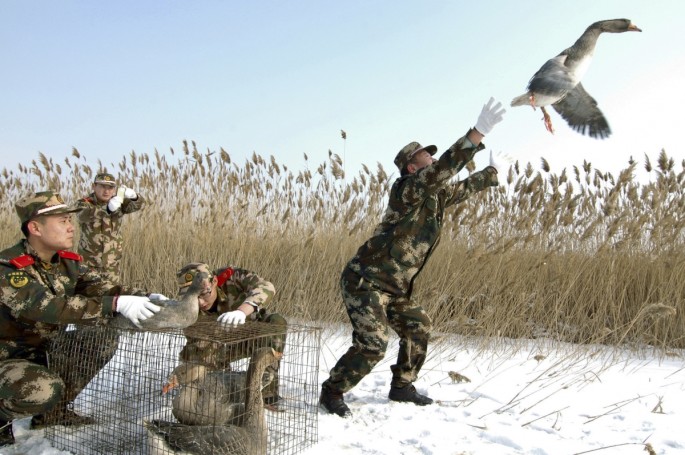As home to many endangered species like the giant panda, the South China tiger and the Tibetan antelope, China is playing an increasingly important role in fighting illegal wildlife trade, a senior American official told reporters Thursday at a wildlife conference in Botswana.
"It's quite positive and all of us can see China's strong commitment in fighting illegal wildlife trade," John Cruden, Assistant Attorney General for the Environment and Natural Resources Division (ENRD) of the U.S. Department of Justice, said to Xinhua during the Kasane Conference on the Illegal Wildlife Trade.
Delegates from 35 countries attended the conference, which began on Wednesday, to discuss measures to combat wildlife poaching and trafficking.
"The Chinese delegates presented their work today, I think they are making great efforts," said Cruden.
Chinese delegate Meng Xianlin, who is also the Executive Director-General of Endangered Species of Wild Fauna and Flora Import and Export Management Office, said that China has made great strides in protecting wildlife including strengthened law enforcement, increased funding and assistance to African countries to train staff in wildlife protection, and continuous sensitization among the Chinese populace regarding the importance of protecting wildlife.
In February, Chinese authorities issued a one-year ban on imports of African ivory carvings acquired in compliance of the Convention on International Trade in Endangered Species of Wild Fauna and Flora (CITES treaty), in order to assess the effects of the bad practice and whether to take additional measures.
Susan Lieberman, executive-director of the Wildlife Conservation Society (WCS), said to reporters at the Kasane Conference that China's latest import ban is a sign that the Chinese government is firm in its commitment to take more responsibility in wildlife protection.
"China now begins to play a leading role in the global fight against illegal wildlife trade and China is doing good in protecting its own wildlife resources, the panda and tiger populations are both increasing, "Lieberman added.
In 2014, Chinese Premier Li Keqiang offered $10 million in aid for wildlife protection in Africa.
Earlier this year, China joined the U.S., South Africa, and international wildlife protection organizations in an cleanup operation dubbed Cobra II, which saw 350 cases closed and more than 3 tonnes of ivory, over 1,000 hides, and 36 rhino horns, and other wildlife products seized from traffickers.
Also this year, China sent for the first time a team of enforcement officials to Kenya to arrest suspected ivory traffickers.
Training is also another asset that Chinese authorities are pushing forward, not only for its own staff but also for wildlife officials in other countries.
"Each year an average of 3,000 to 4,000 Chinese staff receive training," Meng said.
"In recent years, we've made more training for staff from other countries, like African countries, our neighboring countries and we've organized also training overseas."
At the Kasane Conference, delegates said that political will is essential in fighting illegal wildlife trade as it is the driving force to stop all other illegal wildlife trade activities.



























